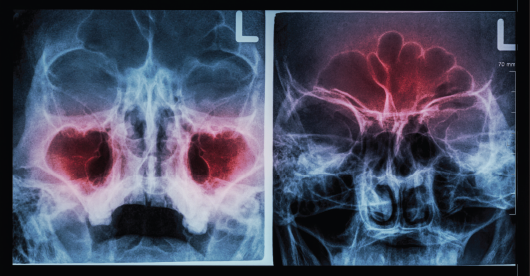New clinical research is providing a fuller picture of chronic rhinosinusitis (CRS) as a spectrum of diseases.


LDMs provided favorable outcomes in patients with chronic rhinosinusitis with nasal polyps (CRSwNP).

Multiple therapeutic options may be effective for treating mild pediatric OSA including observation, management with anti-inflammatory medications, and surgery.
Olfaction can be improved by sinus surgery in about every second chronic rhinosinusitis (CRS) patient.
Patients with long-term symptom duration reported the greatest mean postoperative quality of life improvement.
A central radiological pattern of mucosal disease is associated with inhalant allergen sensitization.

The use of topical high-volume budesonide irrigation does not appear to have a significant effect on IOP and carries a low risk of HPA axis suppression when used long term.
What is the relationship between the frequency of acute chronic rhinosinusitis exacerbations (AECRS) and the degree of asthma control in asthmatic CRS patients?
A look at the prevalence, timing, and potential baseline clinical risk factors associated with patients with medically refractory chronic rhinosinusitis electing endoscopic sinus surgery.

Advanced planning can keep your income, and your clinical practice, afloat